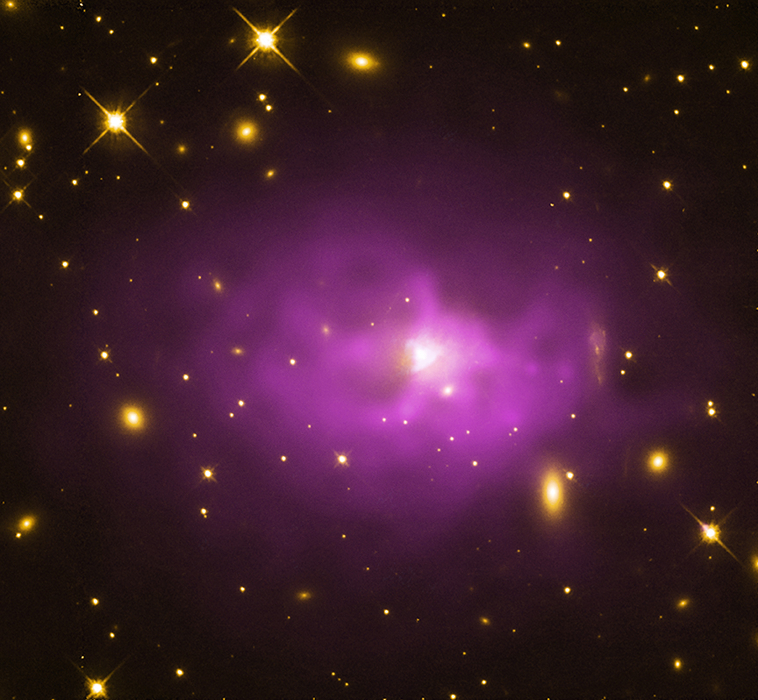
 Credit: X-ray: NASA/CXC/Stanford/Hlavacek-Larrondo, J. et al; Optical: NASA/STScI; Radio: NSF/NRAO/VLA
Credit: X-ray: NASA/CXC/Stanford/Hlavacek-Larrondo, J. et al; Optical: NASA/STScI; Radio: NSF/NRAO/VLA
How Big Can a Black Hole Be?
A black hole grows by swallowing matter that wanders too close to its event horizon. The more matter accreted by the black hole, the larger the event horizon, and the easier it is to swallow more material. In principal this process could proceed without stop, the black hole becoming ever more massive. The largest black holes known, the so-called supermassive black holes, reside at the centers of galaxies and weigh in at millions or even billions of solar masses. Now astronomers believe they have identified a number of even larger, "ultramassive" black holes. In a study of some galaxy clusters (like the cluster PKS 0745, shown above) using optical data from the Hubble Space Telescope, radio data from the Jansky Very Large Array, and X-ray data from the Chandra X-ray Observatory, astronomers have established a relation between the X-ray luminosity, the radio luminosity and the mass of a BH, and showed that, for the brightest galaxies in the clusters studied, this relation suggests that the black holes at the centers of these galaxies must have masses of tens of billions of solar masses. If confirmed, this result would have profound implications for our understanding of how these enormous beasts form and evolve.
Published: October 6, 2014
<
HEA Dictionary ● Archive
● Search HEAPOW
● Other Languages
● HEAPOW on Facebook
● Download all Images
● Education ● HEAD
>

Each week the HEASARC
brings you new, exciting and beautiful images from X-ray and Gamma ray
astronomy. Check back each week and be sure to check out the HEAPOW archive!
Page Author: Dr. Michael F. Corcoran
Last modified Monday, 26-Feb-2024 17:23:06 EST


